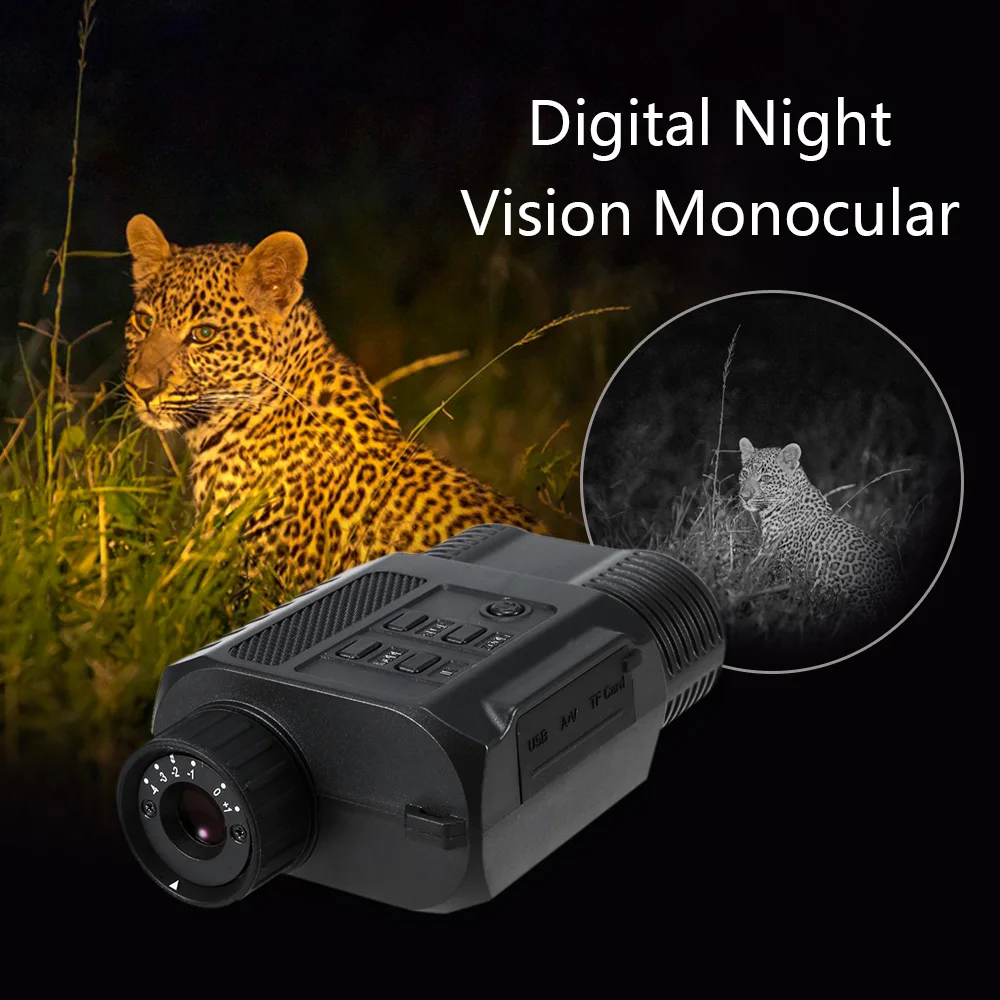Night Hunter: A Comprehensive Guide To Nighttime Wildlife Observation

Table of Contents
Essential Gear for Nighttime Wildlife Observation
Choosing the right equipment is paramount for a successful nighttime wildlife observation experience. The right gear ensures both your safety and the best possible viewing experience, minimizing disturbance to the animals you're observing.
Illumination: Choosing the Right Light Source
Avoid overly bright white lights, which can startle and disturb nocturnal animals. Opt for specialized lighting solutions that preserve both your night vision and the animals' natural behaviors.
- Red light headlamps: These are ideal for illuminating your path while minimizing disruption to nocturnal wildlife. The red light spectrum has less impact on the animals' vision compared to white light. Look for headlamps with adjustable brightness settings for versatility.
- Infrared spotlights: These are excellent for observing wildlife without disturbing their natural behaviors. Infrared light is invisible to most animals, allowing for unobtrusive observation. However, you will need a device capable of detecting the infrared light, such as a night vision device.
- Considerations: When choosing a light source, carefully consider factors like light intensity (lumens), beam range, battery life, and the overall weight and comfort of the device.
Optics: Enhancing Your Night Vision
Powerful optics are crucial for detailed viewing of nocturnal animals at various distances.
- Binoculars: Select binoculars with low-light capabilities, often indicated by large objective lens diameters and a high light transmission rate. Image stabilization features can also be invaluable, especially in low light conditions. Consider binoculars specifically designed for night use.
- Spotting scopes: These are ideal for observing animals at a distance, providing significantly greater magnification than binoculars. They are best used with a sturdy tripod for stability.
- Tripods: A sturdy tripod is essential for stable viewing, especially with spotting scopes, minimizing image shake and blurring, particularly helpful in low-light conditions. Consider a tripod with a fluid head for smooth panning and tilting.
Clothing and Footwear: Preparing for the Night
Appropriate clothing and footwear are crucial for comfort, safety, and minimizing your impact on the environment.
- Camouflage clothing: Dark-colored, muted clothing that blends into the environment will help you remain inconspicuous, reducing the chances of disturbing wildlife.
- Waterproof outerwear: Nighttime conditions can be unpredictable. Waterproof and windproof outerwear will keep you dry and warm, ensuring a more enjoyable experience.
- Comfortable, sturdy footwear: Choose footwear appropriate for the terrain you’ll be navigating. Sturdy boots with good ankle support will protect your feet and provide stability on uneven ground.
Locating Prime Nighttime Wildlife Observation Spots
Finding the right location significantly impacts your success in nighttime wildlife observation. Research is key to identifying areas with high nocturnal animal activity.
National Parks and Wildlife Refuges
Many national parks and wildlife refuges offer exceptional opportunities for nighttime wildlife observation.
- Research local regulations: Before you go, research the specific regulations for nighttime activities in your chosen location. Some areas may require permits or have specific designated areas for nighttime viewing.
- Check for ranger-led programs: Many parks offer guided night walks or programs focused on nocturnal wildlife, providing valuable insights and expert guidance.
Forests and Woodlands
Forests and woodlands offer a rich tapestry of nocturnal habitats.
- Identify areas with known nocturnal animal populations: Research the area beforehand to identify locations known for specific nocturnal species you'd like to observe.
- Choose locations with minimal light pollution: Light pollution can drastically reduce your chances of seeing nocturnal animals. Opt for areas away from urban centers and bright artificial lights.
Coastal Areas
Coastal areas, such as beaches and marshes, support a unique diversity of nocturnal species.
- Be mindful of tides and safe access points: Coastal areas can be hazardous at night. Check tide charts and ensure you have safe access points to your observation location.
- Consider the potential for nocturnal marine wildlife sightings: Coastal areas often offer opportunities to observe nocturnal marine animals, such as shorebirds, sea turtles, or even bioluminescent plankton.
Techniques for Successful Nighttime Wildlife Observation
Mastering certain techniques will drastically improve your chances of observing nocturnal wildlife. Patience and observation skills are vital.
Patience and Stealth: The Key to Success
Nocturnal animals are often shy and easily disturbed.
- Move slowly and quietly: Avoid sudden movements or loud noises that might scare them away.
- Be prepared to wait for extended periods: You may need to wait patiently for animals to emerge or become active.
Listening Skills: Tuning into the Night Soundscape
Sound plays a crucial role in nighttime wildlife identification.
- Train your ears to recognize different animal vocalizations: Learn to distinguish the calls and sounds of different species. Online resources and field guides can help.
- Use sound recording devices: A sound recorder can help you capture and analyze animal vocalizations later, aiding in species identification.
Understanding Animal Behavior: Knowing Your Subject
Familiarize yourself with the behaviors of the nocturnal species you hope to observe.
- Research the species: Learn about their feeding patterns, sleeping habits, and social interactions to better anticipate where and when you're most likely to spot them.
- Understand their activity cycles: Different animals are active at different times of the night. Research their peak activity periods to maximize your chances of observing them.
Safety Precautions for Nighttime Wildlife Observation
Prioritizing safety is paramount during nighttime wildlife observation. Always plan ahead and be prepared for unexpected situations.
Awareness of Surroundings: Situational Awareness
Maintaining awareness of your surroundings is critical for your safety.
- Inform someone of your plans: Let a friend or family member know where you're going, your planned route, and your expected return time.
- Carry a first-aid kit and emergency communication device: Be prepared for minor injuries or emergencies. A fully charged cell phone, a whistle, and a first-aid kit are essential.
Wildlife Encounters: Respectful Distance
Maintaining a safe and respectful distance from wildlife is crucial.
- Never approach or attempt to handle wildlife: Observe animals from a distance, and never attempt to interact with them.
- Be aware of potential risks associated with specific species: Research the potential risks associated with the species you might encounter, and take appropriate precautions.
Weather Conditions: Monitoring and Adaptability
Always monitor weather forecasts before and during your nighttime wildlife observation.
- Avoid observation during severe weather events: Postpone your trip if severe weather is predicted.
- Be prepared for changing temperatures and conditions: Dress in layers and bring appropriate gear to adapt to changing weather conditions.
Conclusion: Embark on Your Nighttime Wildlife Observation Adventure
Nighttime wildlife observation offers a unique and rewarding experience, allowing you to witness the incredible diversity of nocturnal life. By utilizing the proper gear, choosing optimal locations, and employing effective techniques while prioritizing safety, you can greatly enhance your chances of a successful “night hunt.” Remember to respect the animals and their environment, and always practice responsible wildlife viewing. So grab your gear, plan your adventure, and embark on your own nighttime wildlife observation journey! Start planning your next nighttime wildlife observation expedition today!

Featured Posts
-
 Doom The Dark Ages Sale 17 Discount
May 12, 2025
Doom The Dark Ages Sale 17 Discount
May 12, 2025 -
 Controversy Deepens Schoof Avoids Debate Over Fabers Honours Decision
May 12, 2025
Controversy Deepens Schoof Avoids Debate Over Fabers Honours Decision
May 12, 2025 -
 Chantal Ladesou Cash Sur Ines Reg Apres Mask Singer
May 12, 2025
Chantal Ladesou Cash Sur Ines Reg Apres Mask Singer
May 12, 2025 -
 Payton Pritchard Unexpected Sixth Man Of The Year For Boston Celtics
May 12, 2025
Payton Pritchard Unexpected Sixth Man Of The Year For Boston Celtics
May 12, 2025 -
 Jay Kelly Kloynei Kai Santler Se Mia Nea Tainia Toy Mpompak
May 12, 2025
Jay Kelly Kloynei Kai Santler Se Mia Nea Tainia Toy Mpompak
May 12, 2025
